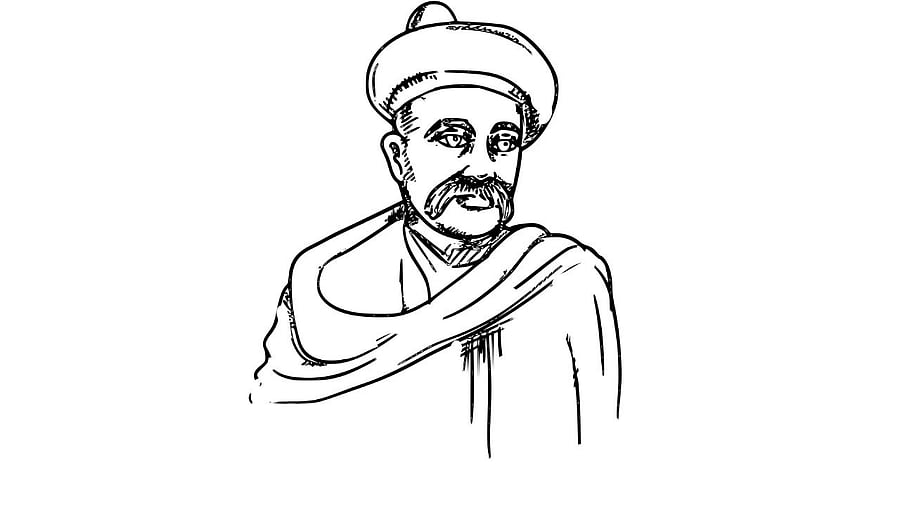
Ancient DNA now tells us the men with horses came centuries later, from further north of the Eurasian Steppes. Tilak had pointed this out over a hundred years ago. (Representative image)
Credit: Wikimedia Commons - Bal Gangadhar Tilak
Today we know, thanks to work done on ancient DNA by David Reich and his team, that a male gene from the Steppe region entered India about 3,500 years ago, and made its way to almost all communities in North India, and elite communities in South India. This idea of Aryans coming from outside is often seen by nationalists as a racist idea fabricated by Europeans, such as Max Mueller and John Marshall. They ignore that the original nationalist, Bal Gangadhar Tilak proposed this same idea in his book ‘The Orion, Or Researches Into The Antiquity Of The Vedas’ and ‘Arctic Home in the Vedas’. But contemporary nationalists refuse to give him due credit.
Era of race science
Tilak is remembered for coining the word ‘Swarajya’, and for challenging the British Raj with his fiery writings in his newspaper ‘Kesari’. But what has been forgotten is his pioneering work in astronomy, appreciating the Vedic sky based on his reading of Rig Vedic mantras. He was in close touch with Max Mueller, who knew him as author of ‘Orion’. Mueller had sent Tilak the second edition of his translation of the Rig Veda. While Tilak was in prison, Mueller had written to authorities to ensure Tilak had access to books and light. When Mueller died in 1900, Tilak wrote, "In him India has lost the warmest friend, the wisest lover, and the most enthusiastic admirer...".
Both Mueller and Tilak lived in the era of race science, when notions of race, language, and nation were conflated. In 1813, Thomas Young used the term ‘Indo-European languages’ to describe the connection between Sanskrit and Latin made in 1786 by William Jones. Before long, the Indo-European linguistic group was spoken of as the Indo-European race, renamed the Aryan race by Mueller, which stood in contrast to the Semitic race distinguished by Semitic languages (Hebrew, Arabic). In the 1850s, when Robert Caldwell classified the Dravidian family of languages, people were quick to equate it with a Dravidian race.
William Jones argued a common origin for Latin and Sanskrit. Racists were quick to propose Europe as the source. Mueller argued it had to be the Caucasus mountains from where the Aryan race split westwards towards Europe and eastwards towards India. His arguments were more mythological. In the 18th century, Europeans believed that the Caucasus was where Noah’s ark came to rest after the Flood. Mueller saw connections between the Vedic Dyaus and the Greek Zeus, and Roman Jupiter. Vedas was the eastern counterpart for him of Greek myths. Mueller arbitrarily argued that Aryans entered India in 1500 BCE. Tilak challenged this by stating that the Vedic hymns were at least 4,000 years older, closer to the North Pole. He had used astronomy. No one had done this before.
Harappan cities
Neither Mueller, nor Tilak, knew anything about Harappan civilisation, which was discovered only a few years after Tilak died in 1920. When the cities of the Indus Valley were discovered, it was easy for John Marshall, and Ramprasad Chanda, to use Mueller’s theory, the Aryan-Dravidian race divide, and Rig Vedic verses of fort-destroying Indra, to explain the collapse of the cities as the result of foreign invasion.
By 1929, Chanda had changed his mind about invasion and conquest. But the story had spread like wildfire. It is only in the 21st century, thanks to diligent work by archaeologists, that we know that Harappa ceased to exist in 1900 BCE, and it had nothing to do with any invasion.
Ancient DNA now tells us the men with horses came centuries later. They did come from outside — not Caucasus as Mueller proposed, but from further north, from the Eurasian Steppes, where horses were domesticated in 2200 BCE, as proven by recent studies on ancient horse DNA. Tilak had pointed this out over a hundred years ago as he poured over the Rig Veda in his prison cell.
Vedic sky
From the Shatapatha Brahmana (composed 500 years after Rig Veda), there are verses that speak of Pleiades being in the vernal equinox. This could have been seen only in 2300 BCE, calculated Tilak who knew about the precession of the equinoxes. From Rig Veda, there are suggestions that Orion was at the vernal equinox. This could have happened only 2000-3000 years earlier, so 5000-6000 BCE.
These observations could have been made by the people of the Steppes or people of the Indus Valley, so the paternal or maternal ancestors of the Rig Vedic poets. We can speculate who. Tilak also identified verses that speak of days being short and nights being long, and vice versa. This can only happen above 50 degrees latitude, so maybe Southern Russia and Kazakhstan, the region now closely linked with the eastward Steppe migration.
Clues to what we know with DNA and archaeological evidence today were found by Tilak in the 19th century itself. We need to give him due credit. Sadly, nationalists eager to reject all scientific evidence as ‘Western’ simply ignore the path-breaking work of the original ‘nationalist’ who was convinced that the Aryans came from a faraway land closer to the Arctic.
Devdutt Pattanaik is the author of more than 50 books on mythology. X: @devduttmyth.
(Disclaimer: The views expressed above are the author's own. They do not necessarily reflect the views of DH.)